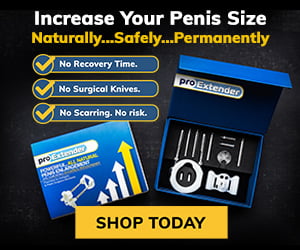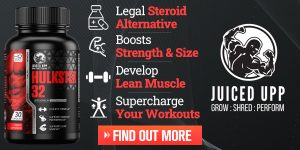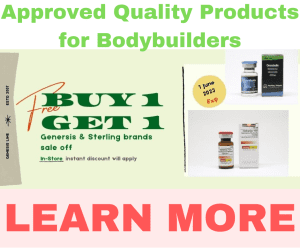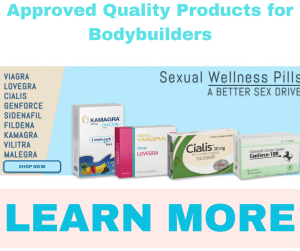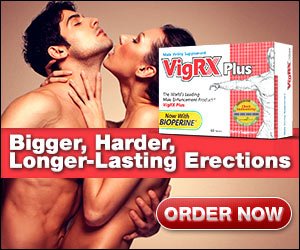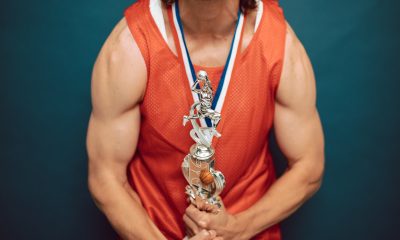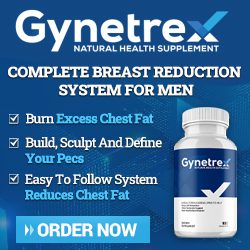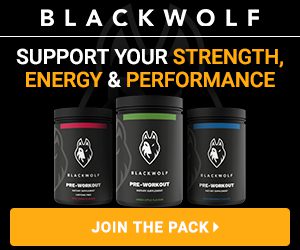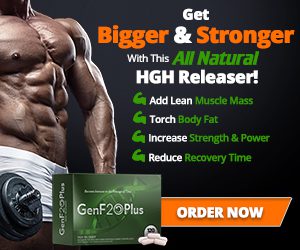Recovery
Getting Back on Track After Contracting Covid-19 (A Bodybuilder’s Guide)
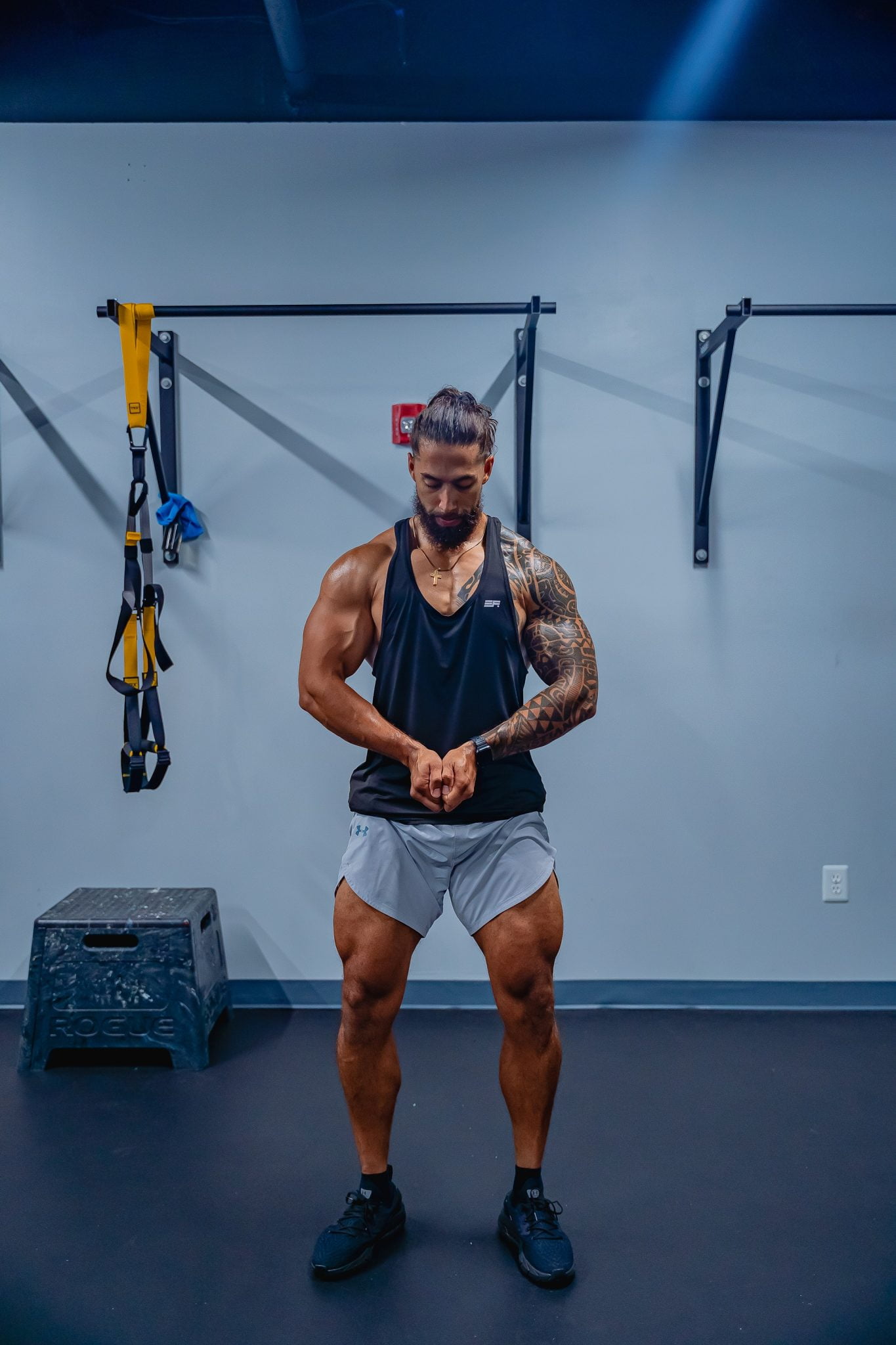
The Coronavirus Disease of 2019 (COVID-19) is considered one of the most dangerous viral infections affecting mankind. The disease has left an ugly scar in sports that may take decades to erase. Towards the end of 2020, the virus brought the world to a standstill. Every sport was curtailed, and participants and respective management were confined to their homes in worldwide lockdowns of biblical proportions. The level of inconvenience was unprecedented in recent history, and Covid-19 seems to have changed our world forever. Whether you’ve been infected or not, everyone has been affected somehow back on Track After Covid-19 is not very difficult.
Related Article:: Covid-19: Advices to Steroid Users
Sportsmen and women, bodybuilders, had careers hanging in the balance, especially those who contracted Covid. Consequently, all were asked or forced to train from home. Everyone had to improvise to keep their form; trust me, it came with many sacrifices. Fast-forward to the beginning of 2021, reality started hitting hard, and we decided the virus wouldn’t continue holding us at 00000ransom. Normalcy started returning, albeit with difficulty. Restrictions were relaxed gradually, and we’re now halfway toward complete normalcy. However, just like how people struggled to adapt to the new normal, we’re having a rough time getting back on track. Humans are incredible creatures; we can continually adapt to any change as long as the conditions endure.
Here is how bodybuilders who have contracted Covid-19 can get up on their feet again and resume their careers. Strong!
Get Medical Clearance
Ensuring you're free from the virus is the first step towards resuming your career as a bodybuilder. However, some scary discoveries continue to be made about this virus. Several recovered patients have continued to experience certain complications even after testing negative for Covid-19. These include the lungs and other organs that don't work in their regular capacity. As a bodybuilder wanting a successful career, this discovery could be devastating. Furthermore, some people report having died suddenly death days or weeks after making a full recovery. For this reason, you must get medical clearance from the doctor before resuming any bodybuilding activity. You should first undergo these tests to determine whether you can resume training after recovering from COVID-19.
Cardiovascular Evaluation
Covid-related sudden deaths have been reported among athletes since the pandemic began. Sudden death is caused by a condition known as myocarditis. Recovered patients may have had an injury in their cardiovascular system, which may eventually cause death. A cardiovascular evaluation by a professional medical practitioner will reveal whether the person can resume training and the exercises they should perform. Tests to determine cardiovascular fitness include heart sounds, chamber dilations, pressure at lower extremities, and more. If any of these cardiovascular activities are found to be below or above average, then it means the athlete is not fit enough to resume full training.
Related Article:: What Impact Have Anabolic Steroids Taken On Your Heart and Blood Cells?
Additionally, the doctor will prescribe appropriate medication and suggest other ways to help you fully recover. It is also important to note that Covid-19 affects people differently. People with severe cases of the disease are more likely to experience complications after negative testing. Mild cases, on the other hand, don’t come with any additional complications post-recovery.
Hypertensive Evaluation and Medication
If a medical doctor determines you’re susceptible to hypertension post-Covid, you must take antihypertensive drugs. These drugs are helpful because they help stabilize blood sugar levels among recovering patients. However, medication such as renin-angiotensin-aldosterone inhibitors may cause adverse side effects. In such a case, you should discontinue the medication and concentrate on other non-medical recovery methods only if the effects are severe.
Pulmonary Evaluation
Coronavirus affects the lungs more than any other organ in the human body. That means the lungs take longer to recover, and some people report having permanent lung damage. Therefore, a pulmonary evaluation is essential to determine the extent of lung damage, if any. Acute respiratory syndrome, a condition seen in recovered Covid patients, may negatively impact a bodybuilder’s career if not detected. A lung examination by a qualified physician should indicate if your lungs are still in distress. The following findings should prompt additional examination of your respiratory system:
- Crackles
- Dullness to percussion
- Egophony
- Dyspnea
- Any other signs of respiratory failure
Not that the lungs play a crucial role in bodybuilding training, and any complication may end your career.
Return to Training Progression
Once the various organs and systems are evaluated, it is time to resume training. You should know that training will be progressive; you won’t start from where you left off. Being a new disease, clinicians and sports managers have not come up with clear guidelines on how to resume training after infection. However, we know that the body may not work at total capacity, hence the need to start with light exercises.
Must Read:: Running and Bodybuilding: Is it a Good Idea to Mix Them?
Stage 1: Low-Intensity Exercises
A body that has been battling COVID-19 needs time to make a full, natural recovery. Light exercises are part of that recovery but will only work under one condition – it must be slow. In the first week of training, after testing negative, ensure to do the following only:
- Walking
- Jogging
- Simple stretches
Do this for 10-15 minutes every day. It should be enough to prepare your body for what is coming in the second week.
In the second week of training, increase the pace of walking and jogging. Also, double the time, so you exercise 20-30 minutes daily. If you feel strong enough to do more stretches, go ahead. Most importantly, monitor how your body responds to the exercises and make necessary adjustments. Please note that the recovery rate differs in people, so you should do everything at your own pace. Keep exercising for as long as you feel comfortable, and don’t rush to perform strenuous workouts.
Stage 2: Moderate Activity
This is the stage where you start toying around with your training equipment. Technically, no severe training is taking place, just you checking out your stuff. Pick that barbell and feel the weight. How does using the treadmill feel now compared to the pre-COVID period?? Grab that rope, do a couple of skips, and then toss it over.
Stage 2 is when to maximize the low-intensity exercises you did in the first week of training. Perform more stretches and cover a more considerable distance in running or jogging. By now, you should be doing up to two hours of training every day of the week. It will prepare you adequately for what is coming in stage 3.
Stage 3: High-Intensity Exercises
Once you have bonded with the equipment, it is time to do some serious training. At this point, you've recovered entirely and are hungry for it. However, you must be sure that your body can endure intense training before hitting the gym. Exercises in this stage should involve every gym equipment and workout you’re used to. These include bench presses, treadmills, barbells, and push-ups. High-intensity exercises are necessary to compensate for muscle mass and general form losses. You may not be able to resume normal training if the body is not returned to its normal state before the pandemic strikes.
Stage 4: Resumption of Normal Training
The body is now ready to resume normal training after successfully going through stages 1, 2, and 3. Stage 4 is where you return and pick up where you left off. This stage should begin in the second month of training and involve full play. Depending on the kind of exercise, you can always increase the pace and do longer to compensate for lost time.
The table below summarizes various types of activities and planning at every stage.
| Stage | Activity Level | Objective | Duration | Exercises Involved |
| Stage 1 | Rest & Low Intensity | · Facilitate full recovery
· Introduce the body to training |
10-15 minutes | Jogging
Walking Simple stretches |
| Stage 2 | Moderate Training | Prepare the body for high-intensity workouts | 20-30 minutes | 2-3 km run or jog
Stationary bicycle ride Less than 50% weight training Light resistance training
|
| Stage 3 | High-Intensity Training | Restore and develop endurance for full-play training | 2-3 hours | Intense aerobic workouts
At least 4 km run/jog Stationary bicycle at up to 140 watts Full bodyweight training Advanced resistance exercises |
| Stage 4 | Normal training | Standard fitness and return to regular training | As determined by yourself or your trainer | Pre-Covid (normal) training |
Conclusion
Training and bodybuilding in general after contracting COVID-19 may not be a walk in the park. One must prepare psychologically, mentally, and physically before hitting the gym. The power of a positive mind is your greatest weapon against this virus. Waking up every day and deciding that it won't change your life for the worse is the first step toward a comeback. But even as you resume training, be careful not to strain the already-compromised body. Most importantly, ensuring a well-balanced diet is appropriate because it goes a long way in ensuring you resume training fast. Good luck!
Bodybuilding
Demystifying Hypertrophy Training
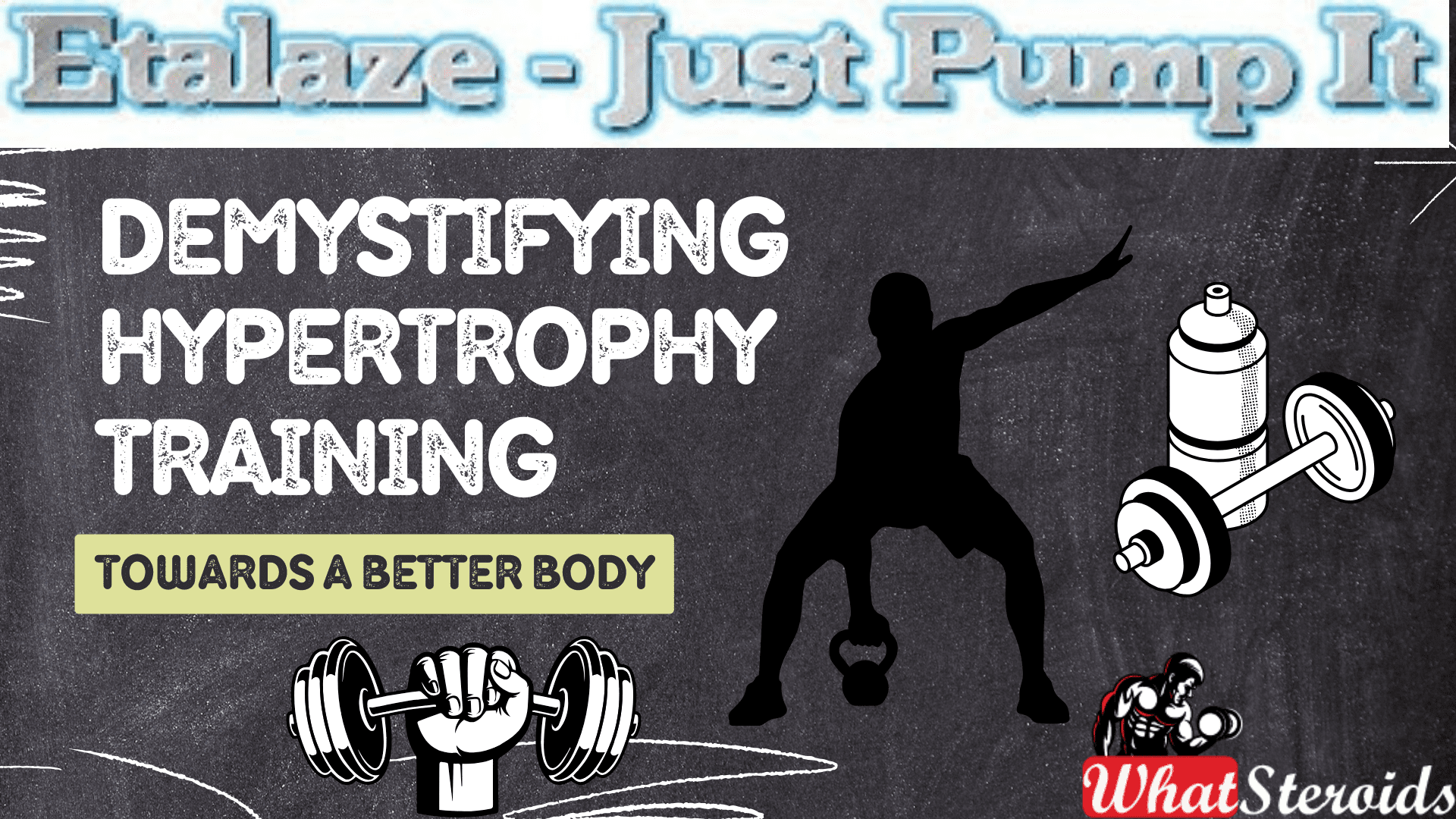
Hypertrophy training, often referred to as bodybuilding training, is a method focused on increasing muscle size and definition through targeted exercises and specific training techniques. Professional bodybuilders have mastered the art of hypertrophy training to sculpt their bodies into peak physical condition.
At its core, hypertrophy training involves lifting weights at a moderate to high intensity for a moderate number of repetitions. The goal is to create micro-tears in the muscle fibers, which then repair and grow stronger and larger during the recovery process. This leads to muscle hypertrophy or an increase in muscle size.
Understanding the basics of hypertrophy training involves knowing how to manipulate variables such as sets, reps, rest periods, tempo, and intensity. By adjusting these factors, individuals can tailor their workouts to target specific muscle groups and achieve optimal results.
Proper nutrition and adequate rest are also crucial components of hypertrophy training as muscles need sufficient fuel and time to recover and grow. Consistency in training and adherence to a well-rounded program are key pillars in unlocking the full potential of hypertrophy training.
Must Read: The Ultimate Chain and Plate Curls for Pumping Biceps
By demystifying hypertrophy training and embracing its principles with dedication and focus, individuals can effectively work towards achieving their desired physique goals while enhancing overall strength and endurance.
Principles of Hypertrophy Training
When you engage in strength training, you put strain on your muscles. This stress prompts the body to repair and adapt, resulting in an increase in muscle fibers. Here are the basics about this form of training you need to familiarise with:
Training Frequency
For new bodybuilders, a frequency of 3-4 times per week is often recommended to allow for sufficient recovery between sessions. Professional bodybuilders may train more frequently, sometimes up to 5-6 times per week, as their bodies have adapted to higher training volumes over time.
Intensity and Volume: New bodybuilders typically start with moderate intensity (around 65-75% of their one-rep max) and moderate volume (3-4 sets of 8-12 reps per exercise). Professional bodybuilders often incorporate higher intensities (75-85% of one-rep max) and higher volumes (4-6 sets of 8-15 reps per exercise) to continue stimulating muscle growth.
Exercise Selection
Both new and professional bodybuilders focus on compound exercises (e.g., squats, deadlifts, bench press) that target multiple muscle groups simultaneously to maximize muscle recruitment and overall hypertrophy. However, professionals may incorporate more isolation exercises to target specific muscles or muscle groups that need extra attention.
Progressive Overload
Both groups prioritize progressive overload, which involves gradually increasing the weight, reps, or sets over time to continue challenging the muscles and promoting growth. This can be achieved through methods such as increasing resistance, shortening rest periods, or varying exercise techniques.
Nutrition
Both new and professional bodybuilders emphasize the importance of nutrition for muscle growth and recovery. This includes consuming an adequate amount of protein to support muscle repair and synthesis, as well as sufficient carbohydrates and fats for energy and overall health.
Rest and Recovery
Adequate rest and recovery are crucial for hypertrophy training. Both new and professional bodybuilders prioritize getting enough sleep (7-9 hours per night) and incorporating rest days into their training schedules to allow muscles to repair and grow.
Supplementation
While both new and professional bodybuilders may use supplements to support their training and nutrition goals, professionals may have more sophisticated supplementation protocols tailored to their specific needs and goals. We recommend supplements such as protein powders, creatine, branched-chain amino acids (BCAAs), and pre-workout formulas.
Monitoring and Adjustments
Professional bodybuilders often closely monitor their progress through measurements such as body weight, body composition, and strength levels. Based on these assessments, they make adjustments to their training, nutrition, and supplementation protocols to continually progress towards their goals.
Arnold Schwarzenegger's Hypertrophy Workout Routine
Arnold Schwarzenegger's volume workout is a legendary approach to hypertrophy training that he popularized during his bodybuilding career. Here's an explanation of how his workout relates to hypertrophy training:
High Volume
Schwarzenegger's training program was characterized by high volume, involving a large number of sets and reps per workout. This high volume stimulates muscle growth by subjecting the muscles to prolonged tension and metabolic stress, both of which are key factors in hypertrophy.
Multiple Sets and Reps
Each exercise in Schwarzenegger's workout typically included multiple sets (often 4-5 sets) with a moderate to high number of reps (8-12 reps). This approach allows for ample time under tension, which is essential for stimulating muscle growth and hypertrophy.
Compound and Isolation Exercises
Schwarzenegger's workout included a combination of compound exercises (e.g., squats, bench press, deadlifts) and isolation exercises (e.g., bicep curls, tricep extensions) to target various muscle groups from different angles. Compound exercises help to maximize muscle recruitment, while isolation exercises allow for targeted muscle stimulation and hypertrophy.
Frequency
Schwarzenegger typically trained each muscle group 2-3 times per week, allowing for sufficient frequency to stimulate muscle growth while also providing adequate recovery time between sessions. This frequency helps to maximize hypertrophy by consistently exposing the muscles to growth-inducing stimuli.
Intensity Techniques
Schwarzenegger often incorporated intensity techniques such as drop sets, supersets, and forced reps into his workouts to further increase the intensity and stimulate muscle growth. These techniques help to push the muscles beyond their normal limits, triggering adaptations that lead to hypertrophy.
Periodization
Schwarzenegger employed periodization principles in his training, alternating between phases of higher volume and lower volume to prevent plateaus and continue making progress. This periodization strategy helps to optimize muscle growth by varying training stimuli over time.
Mind-Muscle Connection
Schwarzenegger emphasized the importance of the mind-muscle connection, focusing on contracting and feeling the target muscles working during each repetition. This approach helps to maximize muscle fiber recruitment and engagement, enhancing the effectiveness of each exercise for hypertrophy.
Nutrition and Recovery
In addition to his training program, Schwarzenegger paid close attention to his nutrition and recovery strategies to support muscle growth and hypertrophy. Adequate protein intake, proper hydration, and sufficient rest are essential components of any hypertrophy-focused training program.
Overall, Schwarzenegger's volume workout is a comprehensive approach to hypertrophy training that incorporates high volume, frequency, intensity techniques, and periodization to maximize muscle growth and achieve an impressive physique.
Also Read: Why Trenbolone Remains A Beast In The Market
10 Groups of Athletes That Can Benefit from Hypertrophy Workouts
We have prepared for you 10 groups of athletes that should consider hypertrophy training
1. Combat Sports Athletes
Martial artists, boxers, and other combat sports athletes can enhance their power and endurance through hypertrophy training.
2. Track and Field Athletes
Sprinters, jumpers, and throwers can improve their explosive strength by including hypertrophy training in their regimen.
3. Football/Soccer Players
Both American football players and soccer players can benefit from hypertrophy training to increase muscle mass and strength.
4. Gymnasts
Building lean muscle mass through hypertrophy training can help gymnasts improve their strength-to-weight ratio for better performance.
5. Swimmers
Swimmers can enhance their power in the water by incorporating hypertrophy exercises to strengthen key muscle groups.
6. Cyclists
While endurance is crucial for cyclists, adding hypertrophy training can boost leg strength and overall performance on the bike.
7. Basketball Players
Building muscle through hypertrophy training can improve basketball players' agility, jumping ability, and overall athleticism on the court.
8. CrossFit Athletes
CrossFit enthusiasts looking to excel in competitions can benefit from hypertrophy training to increase overall strength and muscular endurance.
9. Triathletes
Incorporating hypertrophy exercises into triathletes' routines helps prevent injuries by strengthening muscles that support joints during long-distance races.
10. Powerlifters
While powerlifting focuses on maximal strength lifts, including some hypertrophy work can aid in building a solid muscular foundation for lifting heavy weights more efficiently.
By tailoring a specific hypertrophy program to suit each group's athletic needs and goals, these athletes have the opportunity to optimize their performance levels while reducing the risk of injury associated with repetitive movements in sports-specific activities.
Final Thoughts
By understanding the underlying principles of progressive overload, volume, intensity, and frequency, individuals can tailor their training programs to effectively stimulate muscle growth. Whether you're a novice or a seasoned athlete, hypertrophy training offers a structured framework for optimizing muscle hypertrophy and sculpting a physique that reflects dedication, consistency, and strategic planning.
Embracing the science behind hypertrophy training empowers you as an individual to surpass limitations, break plateaus, and unlock their full potential in pursuit of their fitness aspirations. With proper guidance, commitment, and perseverance, anyone can harness the transformative power of hypertrophy training to sculpt a stronger, more resilient, and aesthetically pleasing physique.
Related Article: Post Cycle Therapy Vs. B&C: Which is Best for You?
Bodybuilding
Varicose Veins in Bodybuilders: Risk Factors, Diagnosis and Management
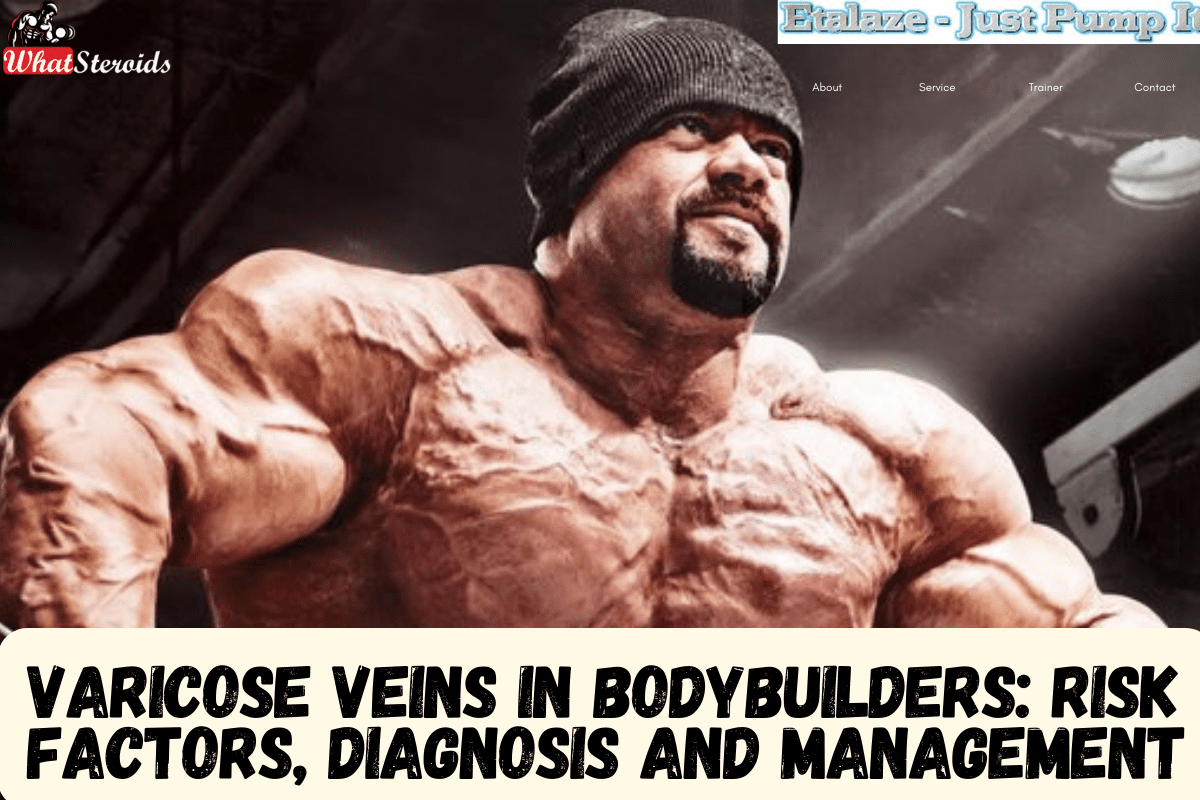
Varicose veins, commonly known as twisted or enlarged veins, can occur in individuals who engage in intense physical activities such as bodybuilding. While varicose veins are often associated with factors like age and genetics, there are specific causes that contribute to their development in bodybuilders.
Varicose veins mostly occur when the valves within the veins become weak or damaged, causing blood to pool and the veins to stretch. This can result in discomfort, pain, swelling, and a visible appearance of bulging or rope-like veins.
While varicose veins can affect anyone, certain factors increase the risk of developing them. These include age, family history, obesity, pregnancy, prolonged standing or sitting, and a lack of physical activity.
Varicose Veins in Bodybuilders
Bodybuilders may also be interested in understanding how varicose veins relate to their fitness journey. While intense weightlifting exercises may temporarily increase blood pressure in the leg muscles during workouts, there is no direct evidence linking bodybuilding activities to an increased risk of developing varicose veins.
Don't Miss: Bodybuilding Protein Cycling for Massive Gains
It is important for bodybuilders to be aware of the potential causes of varicose veins so they can take preventive measures. Regular exercise breaks to allow for movement and stretching can help improve blood flow. Wearing compression garments during workouts may also provide support to the veins and reduce strain.
By understanding these causes, one can take proactive steps towards maintaining healthy circulation while pursuing their fitness goals.
As mentioned, varicose veins is a condition characterized by enlarged and twisted veins, can affect individuals from various walks of life, including bodybuilders. While bodybuilding is generally associated with improved cardiovascular health and muscular strength, it is important to be aware of the potential causes of varicose veins in this specific population.
Diagnosis of Varicose Veins In Bodybuilders
The diagnosis of varicose veins typically involves a combination of a medical history review, physical examination, and sometimes imaging studies. Here's an overview of the diagnostic process:
- Medical History: Your healthcare provider will inquire about your symptoms, family history of vein issues, overall health, and lifestyle factors, including your exercise routine.
- Physical Examination: The healthcare provider will conduct a physical examination, focusing on the appearance of your veins, any swelling, and areas of discomfort. They may ask you to stand and sit to observe how blood flows in your legs.
- Duplex Ultrasound: This non-invasive imaging test is commonly used to assess blood flow and the structure of veins. It helps identify valve dysfunction, blood clots, and the extent of the varicose veins.
- Venous Doppler Ultrasound: This specialized ultrasound focuses on the blood flow in the veins and helps evaluate the competence of the valves.
- CT or MRI Scans: In some cases, especially if there are concerns about deeper veins or other complications, a computed tomography (CT) or magnetic resonance imaging (MRI) scan may be recommended.
For bodybuilders, it's important to communicate details about their exercise routine, any symptoms experienced during or after workouts, and any specific concerns they may have. The diagnosis will help determine the severity of the condition and guide the development of an appropriate treatment plan. If you suspect varicose veins or are experiencing symptoms, consulting with a healthcare professional is crucial for an accurate diagnosis and tailored advice.
Causes of Varicose Veins and Risk Factors
Understanding the risk factors and causes of varicose veins is crucial for bodybuilders to maintain their vascular health. The excessive strain placed on the muscles during weightlifting and other high-intensity exercises can lead to increased pressure on the veins. This pressure can weaken the vein walls and valves, resulting in the formation of varicose veins.
Here is a list of common causes that may contribute to the development of varicose veins in bodybuilders:
Genetics
Some individuals may have a genetic predisposition to developing varicose veins. If there is a family history of this condition, bodybuilders may be at higher risk.
Age
The risk of varicose veins generally increases with age.
Gender
Women are more commonly affected than men, often due to hormonal changes during pregnancy and menopause.
Pregnancy
The increased pressure on the veins in the pelvic area during pregnancy can contribute to varicose veins.
Obesity
Excess weight can put additional pressure on the veins, increasing the risk.
Sedentary Lifestyle
Lack of physical activity can impair blood circulation and contribute to vein issues.
Occupation
Prolonged standing or sitting: Bodybuilders often spend extended periods standing during workouts or competitions. Similarly, long periods of sitting during rest intervals or post-competition recovery can impede proper blood circulation and contribute to venous issues. 6. Increased muscle mass: The growth of muscle mass in bodybuilders may lead to increased pressure on surrounding blood vessels, potentially obstructing healthy blood flow and contributing to venous insufficiency.
Prolonged standing or sitting can indeed have negative effects on blood circulation, especially for bodybuilders. When bodybuilders spend long periods of time standing during workouts or competitions, it can impede proper blood flow and potentially contribute to venous issues.
Similarly, extended periods of sitting during rest intervals or post-competition recovery can also hinder healthy blood circulation. Increased muscle mass in bodybuilders is another factor that can affect blood flow. As muscle mass grows, it puts increased pressure on surrounding blood vessels, which may obstruct the normal flow of blood and contribute to venous insufficiency. It's important for bodybuilders to be aware of these potential risks and take steps to promote healthy circulation. This could include incorporating regular breaks during workouts or competitions to allow for movement and stretching, as well as practicing good posture while sitting.
Deep Vein Thrombosis (DVT)
A history of blood clots can affect vein function.
Lack of Exercise
Regular physical activity supports healthy blood circulation.
Smoking
Tobacco use can contribute to poor circulation.
Hormonal Changes
Hormonal imbalances or fluctuations, such as those caused by the use of anabolic steroids or other performance-enhancing substances, can potentially impact vein health and increase the likelihood of developing varicose veins. Additionally, birth control pills and hormone replacement therapy may influence vein health.
Chronic Constipation
Straining during bowel movements can increase abdominal pressure.
Trauma or Injury from Excessive Training
Previous injuries to the veins can affect their functioning. Excessive straining or holding one's breath while performing intense exercises can increase intra-abdominal pressure. This elevated pressure can hinder healthy blood flow and contribute to the formation of varicose veins. Bodybuilders often engage in heavy weightlifting exercises that put significant pressure on their muscles and surrounding blood vessels. This increased pressure can lead to weakened vein walls and valves, making them more susceptible to becoming varicose.
Clothing
Wearing tight clothing, especially around the waist and legs, may contribute to varicose veins.
Increased muscle mass
The growth of muscle mass in bodybuilders may lead to increased pressure on surrounding blood vessels, potentially obstructing healthy blood flow and contributing to venous insufficiency.
By understanding these causes, bodybuilders can take proactive steps towards maintaining healthy circulation while pursuing their fitness goals.
Related Article: Best Infrared Light Devices for Recovery, Hair Loss, And More
Tips to Manage Varicose Veins
Bodybuilders dealing with varicose veins can take certain measures to manage and alleviate symptoms:
Compression Wear
Wearing compression stockings can help improve blood circulation and reduce swelling.
Elevating Legs
Elevating the legs when resting can assist in reducing blood pooling and swelling.
Regular Exercise
While intense weightlifting might contribute to varicose veins, regular, low-impact exercises like walking and swimming can promote overall cardiovascular health.
Weight Management
Maintaining a healthy weight can help alleviate pressure on the veins.
Hydration
Staying well-hydrated supports overall vascular health.
Avoiding Prolonged Sitting or Standing
Changing positions regularly and avoiding long periods of sitting or standing can be beneficial.
Healthy Diet
A diet rich in fiber and low in salt can contribute to overall vascular health.
Medical Evaluation
Consult with a healthcare professional to determine the severity of the condition and explore treatment options if necessary.
Warm-Up and Cool Down
Incorporate proper warm-up and cool-down routines into your workouts to promote healthy circulation.
Avoiding High Impact Exercises
Consider reducing high-impact exercises that may strain the veins, and focus on lower-impact activities.
Cross-Training
Include a variety of exercises in your routine to engage different muscle groups and promote overall cardiovascular health.
Regular Massage
Massage therapy may help improve blood circulation and reduce muscle tension.
Interval Training
Incorporate interval training into your workouts to enhance cardiovascular fitness without excessive strain on the veins.
Gradual Progression
Gradually increase the intensity and duration of your workouts to allow your body to adapt without putting excessive stress on the veins.
Vitamin C
Foods rich in vitamin C, like citrus fruits, may support blood vessel health.
Omega-3 Fatty Acids
Include sources of omega-3 fatty acids, such as fish or flaxseed, in your diet, as they have anti-inflammatory properties.
Avoiding Tight Clothing
Opt for loose-fitting clothing, especially around the waist and legs, to avoid restricting blood flow.
Cool Showers
Finish your showers with cool water to help improve circulation.
Herbal Remedies
Some herbs like horse chestnut may have potential benefits for venous health, but consult with a healthcare professional before trying any supplements.
Stress Management
Practice stress-reducing techniques like meditation or yoga, as stress can impact vascular health.
Foot Elevation
Elevate your feet above heart level whenever possible to assist with blood flow.
Regular Check-ups
Keep regular appointments with healthcare professionals to monitor your vascular health.
Overall
Understanding the risk factors and causes of varicose veins is crucial for bodybuilders to maintain their vascular health. The excessive strain placed on the muscles during weightlifting and other high-intensity exercises can lead to increased pressure on the veins. This pressure can weaken the vein walls and valves, resulting in the formation of varicose veins.
Importantly, maintaining a well-rounded exercise routine that includes cardiovascular exercises can help improve overall circulation and reduce the risk of venous issues.
Must Read: First Steroid Cycle – Can I Keep My Gains After it?
Bodybuilding
Chia Seeds in A Bodybuilder’s Diet: An Expert’s Advice

Chia seeds are a nutrient-dense food, offering protein, fiber, healthy fats, and various vitamins and minerals. While they're not a direct source of muscle-building protein like meat or eggs, they can complement a balanced diet by providing essential nutrients important for overall health, which indirectly supports muscle development when combined with a proper exercise routine. However, solely relying on chia seeds for building muscle mass might not be sufficient—you'd likely need a variety of protein sources along with a consistent workout regimen for optimal muscle growth.
Chia seeds are popular among bodybuilders due to their high protein and omega-3 fatty acid content. They provide a good source of nutrients, help in muscle repair, and offer sustained energy throughout workouts. Additionally, their high fiber content can aid in digestion and help manage hunger, which can be beneficial for those trying to maintain a specific diet while building muscle.
Where to Buy Chia Seeds for Your Bodybuilding Diet
These are commonly available in various grocery stores, health food stores, and even online marketplaces like Amazon or specialty health websites. You can check your local supermarkets, health food stores, or browse online to purchase chia seeds for your bodybuilding diet. Many health-focused stores offer bulk options, which can be more cost-effective if you plan to use them regularly in your diet.
You can also try purchasing the seeds from popular online retailers like Walmart, or health food stores such as Whole Foods Market, Thrive Market, or Vitacost. There are also specialty health stores like iHerb or The Vitamin Shoppe that carry chia seeds.
Related Article: A New Caffeine? What You Need to Know about Teacrine
Preparation
These magical seeds can be quite versatile in the kitchen! Here are a few methods you can try:
After cooking it, you can serve them in various ways. You might consider adding them to yogurt, smoothies, oatmeal, or salads for an added nutritional boost. You can also use them in baking as an egg substitute or make a chia pudding by mixing them with your choice of liquid (like almond milk) and allowing them to gel.
What A bodybuilder Gets From the Magical Seeds
Rich in Protein
Chia seeds are a great source of plant-based protein, containing roughly 4.7 grams of protein per ounce. For bodybuilders, their protein content is beneficial for muscle repair and growth.
Omega-3 Fatty Acids
They are an excellent source of omega-3 fatty acids, particularly alpha-linolenic acid (ALA). These healthy fats support heart health, reduce inflammation, and aid in muscle recovery, all beneficial for bodybuilders. The omega-3s in chia seeds can also help maintain joint health, enhance stamina, and assist in managing weight. Integrating chia seeds into a balanced diet can contribute to overall well-being and support a bodybuilder's goals.
Fiber Content
They contain a high amount of soluble and insoluble fiber, with about 10 grams of fiber in a 1-ounce (28-gram) serving.
Helps with digestion and promotes a feeling of fullness, aiding in weight management.
Antioxidants
The seeds contain antioxidants like flavonoids and phenolic compounds that help combat oxidative stress in the body, potentially reducing the risk of chronic diseases. These antioxidants can help protect cells from damage caused by free radicals. Including chia seeds in your diet can contribute to overall health and well-being due to their antioxidant properties. Fight off free radicals that can damage cells post-workout with these magical seeds.
Minerals
They contain calcium, phosphorus, magnesium, and manganese, contributing to bone health, energy metabolism, and antioxidant activity. These minerals support various bodily functions, from maintaining strong bones to aiding muscle function and energy production.
Hydration
When soaked, they form a gel that retains water, aiding in maintaining hydration during workouts.
What Are The Disadvantages of Overconsuming Chia Seeds
Chia seeds can be beneficial for bodybuilders due to their nutrient content, but overconsumption might cause gastrointestinal issues or interfere with hydration.
They're high in fiber, so eating too many could cause digestive problems like bloating or diarrhea. Plus, their omega-3 fatty acids might interact with certain medications or cause allergic reactions in some people. Moderation is key!
Overall
In summary, Chia seeds are a powerhouse for bodybuilders! They offer a high protein content, essential for muscle repair and growth. Additionally, they're packed with omega-3 fatty acids for reducing inflammation and providing sustained energy during workouts. Their fiber content aids in digestion and helps maintain a steady release of energy. Plus, their versatility allows for easy incorporation into shakes, smoothies, or as a topping for meals, making them a convenient addition to a bodybuilder's diet.
Don't Miss: 10-Week Army Combat Fitness Test (ACFT) Plan
-
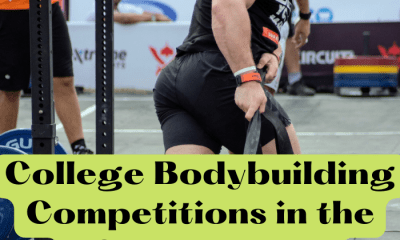
 Bodybuilding2 years ago
Bodybuilding2 years agoCollege Bodybuilding Competitions in the US and Europe
-

 Bodybuilding2 years ago
Bodybuilding2 years agoFootballers Who Started as Bodybuilders
-

 Bodybuilding2 years ago
Bodybuilding2 years agoOlympic Lifting : 25 Strategies That Work
-
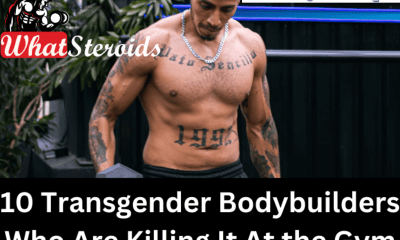
 Bodybuilding2 years ago
Bodybuilding2 years ago10 Transgender Bodybuilders Who Are Killing It At the Gym
-
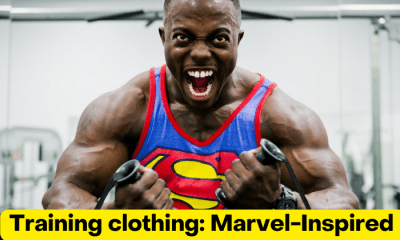
 Bodybuilding2 years ago
Bodybuilding2 years agoTraining clothing: Marvel-Inspired Clothing on Amazon in 2023
-

 Bodybuilding2 years ago
Bodybuilding2 years agoNew Arrival Workout Equipment on Amazon for The Disabled
-

 Steroids2 years ago
Steroids2 years agoSupplemental Breast Milk for Bodybuilders: The Secret Behind It
-

 Steroids2 years ago
Steroids2 years agoDwarf Bodybuilders Giving Pros A Run for Their Money
-

 Steroids1 year ago
Steroids1 year agoVOX Testing: Why Bodybuilders Must Have It Tested Regularly
-

 Steroids11 months ago
Steroids11 months agoShavers and Other Body Grooming Equipment for Bodybuilders In 2023
-

 Steroids11 months ago
Steroids11 months agoChatGPT and Other Avenues to Find Great Bodybuilding Coaches
-

 Steroids11 months ago
Steroids11 months agoBest Oil Recommendations Before Competition for Subtle Shimmer
-

 Steroids10 months ago
Steroids10 months agoPowerlifting Vs Power Building: Find Out the Big Difference and When to Shift Between the Two
-

 Beginners9 months ago
Beginners9 months agoTren Cycle for Beginners
-

 Bodybuilding8 months ago
Bodybuilding8 months agoCompetition Prep Cycle for Pro Bodybuilders
-

 Nutrition6 months ago
Nutrition6 months agoEverything Nutritional Food: What’s Too Much Or Too Little
-

 Bodybuilding5 months ago
Bodybuilding5 months agoChia Seeds in A Bodybuilder’s Diet: An Expert’s Advice
-

 Beginners6 months ago
Beginners6 months agoCalisthenics: Secret to Building A Better Upper and Middle Body
-

 Bodybuilding4 months ago
Bodybuilding4 months agoUnique Things That Have Redefined Mr Olympia Over The Years
-

 Anabolic Steroids5 months ago
Anabolic Steroids5 months agoNatural Steroids for Bodybuilding
-

 Anabolic Steroids4 months ago
Anabolic Steroids4 months agoStart The New Year Strong With These Tips
-

 Anabolic Steroids5 months ago
Anabolic Steroids5 months agoLegality of Anabolic Steroids In Latin America
-

 Steroids5 months ago
Steroids5 months agoThese Bodybuilding Equipment Might Become Obsolete Next Year (See Alternative Upgrades)
-

 Bodybuilding3 months ago
Bodybuilding3 months agoFunny Gym Stories and Moments to Light Up Your Day
-

 Bodybuilding4 months ago
Bodybuilding4 months agoCalorie Dumping: A Bodybuilder’s Guide

